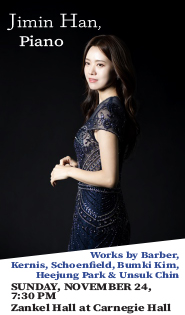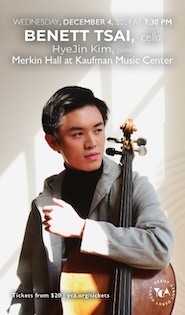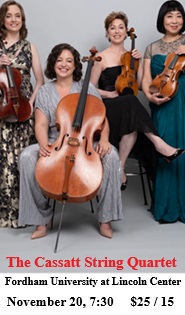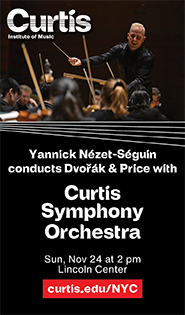Ars Lyrica Houston celebrates the sacred and earthy pleasures of Navidad
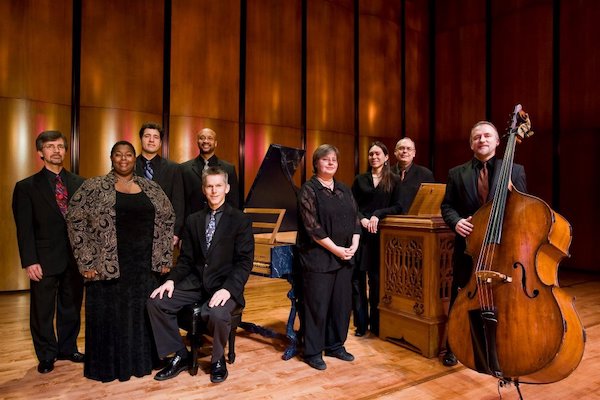
The complex of emotions surrounding the Christmas story is so wide and varied that a December vocal concert can mix manger scenes with love songs, laments, dance beats, prayers, and bacchanalia without anything seeming amiss.
At least that was the case Sunday afternoon at Manhattan’s Corpus Christi Church, as Music Before 1800 presented Ars Lyrica Houston in its New York debut. The early-music ensemble performed music composed in times and places when piety and partying were two sides of the same coin.
The earthy yet poetic culture of Spain and Latin America in the colonial period resonated through the performances by two singers and five instrumentalists, led by the group’s music director Matthew Dirst at the harpsichord and organ.
The program’s overall title, “Crossing Borders,” conjured thoughts of this Texas-based ensemble contemplating its neighbors to the south, or of the cultures of Old Spain and New Spain shaping each other, or (as Dirst put it in a program note) the genre-mixing, “hard-to-pigeonhole” nature of the pieces being performed.
Right out of the gate, “A ti, mi Jesús amado” (To you, my beloved Jesus) by the 18th-century composer Joseph Perez, described Jesus as “mi amor” but also as “covered in blood,” all to a lilting Spanish rhythm propelled by cellist Eric Smith’s bouncy downbeats. The voices of soprano Camille Ortiz and mezzo-soprano Cecelia Duarte dipped and swayed together in the euphonious thirds and sixths long associated with Hispanic music on either side of the Atlantic. A Good Friday text that might have prompted dark musings from J.S. Bach here danced gracefully down the road.
As they showed in the two solo songs that followed, Ortiz’s flute-like tone and Duarte’s velvety mezzo were quite distinct in character. Yet their voices blended seamlessly whenever they sang together, like two organ stops producing a third timbre.
Dialing all the way back to about 1500, mezzo-soprano Duarte wove a melancholy meditation on the Virgin Mary in Juan del Encina’s “A quién debo yo llamar” (Who is my life’s consolation), with tender accompaniment and an instrumental interlude by violinists Stephani Noori and Maria Lin and cellist Smith.
Leaping ahead again two centuries—and into another galaxy stylistically—soprano Ortiz stopped the show with a brilliant Italian-style aria, “La Mariposa” (The Butterfly). Composer José Durán turbocharged the poetic text about a butterfly flying too close to a flame with Handel-like melismas and climactic high notes, and added an energetic violin obbligato for good measure. Ortiz and violinist Noori rendered it all with gusto.
Returning to earth, Matthew Dirst played a pastoral harpsichord solo, Domenico Scarlatti’s Sonata in C major, K. 513, whose drone notes and gently rocking 6/8 meter sounded like musical signifiers for “shepherds abiding in the fields by night.” Another instrumental selection in the same group, the Pastorella from Corelli’s “Christmas” Concerto, Op. 6, no. 8, evoked a similar scene; familiar from chamber-orchestra concerts, Corelli’s piece sounded far more spare and rustic in this performance, as rendered by just two Baroque violins with a discreet continuo of organ, cello and guitar.
This Christmas-themed group of pieces, all by composers roughly contemporary with J.S. Bach, also included three villancicos, or popular strophic songs with refrains. The pastoral mood continued in “Al dormir el sol” (To sleep, O Sun) by Sebastián Durón, a sweetly-tuned lullaby to the baby Jesus with both singers taking the refrain and mezzo Duarte crooning the verses. In “Un ciego que contrabajo” (The blind man who, with effort) by Mexican-born Antonio de Salazar, percussionist Jesús Pacheco Mánuel was heard for the first time, driving the vigorous song with syncopated drum rhythms, as soprano Ortiz took her vivacious turn with the verses. Juan de Araujo’s “Ay andar a tocar” (Go now to play) flew by amid Spanish-style hemiola (shifting beats) as the singers cheerfully traded verses.
In the next section, the program caught its breath with a triple dose of Spanish melancholy. The old master del Encina returned with a shepherd’s mournful love song, “Ay, triste, que vengo vencido” (Ah, sad, you see me overcome), delivered tenderly, parlando, by Duarte to a pianissimo accompaniment. Guitarist Richard Savino’s sensitive solo, “Pavanas al Aire Español” (Pavane on a Spanish song) by Gaspar Sanz, created an even more intimate mood, which was only partly dispelled by the fast, syncopated beat of Manuel José Quiroz’s villancico “Jesús, Jesús, y lo que subes dorando” (Jesus, you rise luminous), with its smartly interweaving vocal lines.
At last, however, Mánuel’s drums and tambourine turned the singers into 17th-century party girls dancing to the beat of the chacona (chaconne) “A la vida bona” (no translation necessary) by Juan de Arañés, in which the percussionist took an exuberant solo himself. A tangle of shifting meters signaled the dance called jacara in Durón’s “Vaya, pues, rompiendo el aire” (Let it go, tearing through the air); soprano Ortiz’s lively performance was gradually joined by drums, violinist Lin, and finally castanets, in what might be called a Lin-Mánuel obbligato.
The program came down from “in the heights” by closing where it began, with more music by Juan del Encina, the peppery minor-key Mardi Gras song “Hoy comamos y bevamos” (Let us eat and drink today), in which the singers merrily enumerated some of the earthier consequences of overindulgence. This phenomenon is also not unknown at Christmas, no es así?
Music Before 1800 presents Hesperus accompanying the silent film The Hunchback of Notre Dame, January 23 at Corpus Christi Church. mb1800.org; 212-666-9266.
